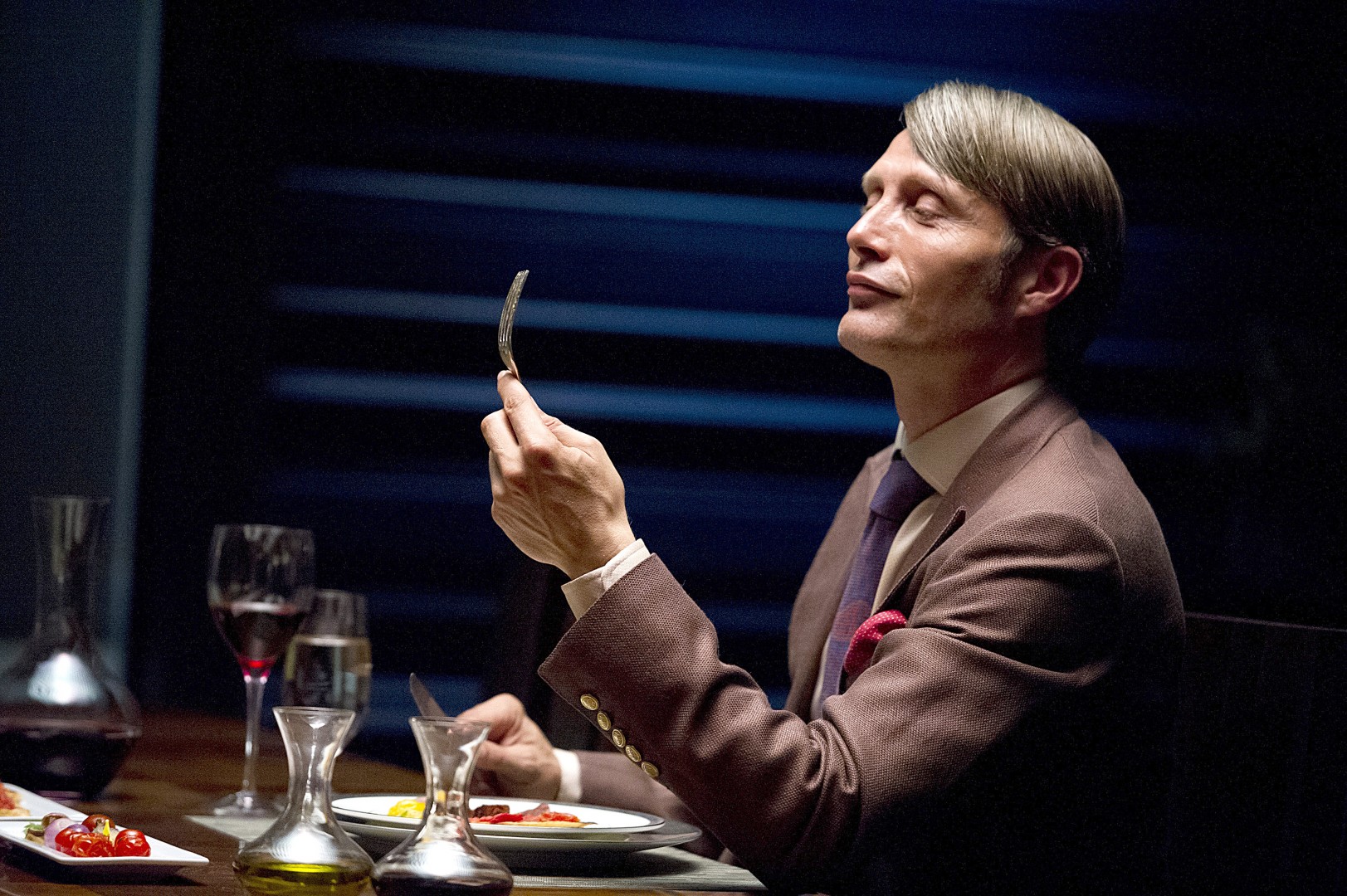
Bryan Fuller, the mastermind behind cult classic TV shows “Pushing Daisies,” “Dead Like Me” and “Wonderfalls,” is back with a totally different kind of series: the serial killer drama “Hannibal,” airing at 9 p.m.Thursdays on NBC. The character of Dr. Hannibal Lecter is most infamously known for Anthony Hopkin’s portrayal in the all-time horror classic “The Silence of the Lambs” (1991), but the story itself was invented by Thomas Harris in the 1981 book “Red Dragon.” Lecter, a cannibalistic psychiatrist and prototypical evil genius, has been the subject of pop culture fascination for over 30 years now. Fuller’s “Hannibal” is the latest of the spin-offs and adaptations of Harris’ original story, and follows the same plotline as the original novel: the FBI manhunt for the serial killer.
“Hannibal” comes with a slew of viewer-discretion-advised warnings to which audiences should take heed. Even seasoned crime show watchers might find the premiere episode a bit unsettling, but if the audience is willing to endure the physical gore, they have a real treat to enjoy. The hype surrounding the show — a #1 placement on Entertainment Weekly’s “Must List,” early-review grades like 4 stars and 9 out of 10 — seems deserved. Channeling other FBI-based psychological thrillers like “Criminal Minds” as well as the BBC version of “Sherlock,” “Hannibal” aims to take you inside the minds of the two main characters, Graham and Lecter, through the use of inner monologues.
The two biggest aspects driving the show are the interplay between Dancy’s Graham and Mikkelsen’s Lecter and the dramatic irony. By definition, dramatic irony is when certain characters, or the audience, know things that the other characters do not know. Most notable is a scene where Will sits down with Lecter to have breakfast; the implication is that Graham is unwittingly consuming human meat, as the scene follows a sequence revealing Lecter preparing human flesh which he then introduces to Graham as “sausage.” In the case of “Hannibal,” the audience knows that Dr. Lecter is the cannibal serial killer the FBI are searching for — and yet the doctor is a consultant on the case and never made suspect. The alpha-male showdown between Graham and Lecter is what truly commands attention. “I don’t find you that interesting,” Graham tells Lecter, who responds, “You will.”
Will Graham is a tortured soul, introduced as “antisocial” and having Asperger’s syndrome. Graham’s gift and curse is that he has the ability to empathize with even the most heinous killers. As he says in a speech at the Quantico facility, “Everyone has thought about killing someone one way or another, whether it be your own hand or the hand of God.” “Hannibal” makes repeated references to the fact that Graham has been deemed mentally unstable by FBI officials; he seems to be wavering on a thin line between sanity and becoming one of the killers he studies.
From the start, “Hannibal” characterizes Dr. Lecter as living in a gray area. As Will describes, the killer is “not insensitive … he feels bad,” killing out of a twisted form of love and in a respectful, or “merciful,” way. The oddest thing about Mikkelsen’s Lecter is the sense that he is not a villain so much as an antihero. He may be cold and eerily calm but is so highly intelligent that Will refuses to write him off as a “typical” psychopath. Fans of shows like “Dexter” will delight in the moral ambiguity, and by leaving the characterization of Lecter open-ended, audiences are encouraged to make their own personal conclusions on what is right and wrong.
Cinematically, “Hannibal” is quite beautiful; there is something definitively artsy about the use of color and background, giving the show an intoxicating feel. Mikkelsen enters the show framed in shadow and darkness; this is only one of a number of light tricks used by the makers of “Hannibal” to emphasize dramatic effect.
The weakest element of the show is the lack of supporting characters. Lawrence Fisburne co-stars as Jack Crawford of the behavioral science unit, but his lines seem to be mostly filler, not of any real dramatic depth. Caroline Dhavernas co-stars as Dr. Alana Bloom; she has not yet been given enough attention. Hopefully the show will allow her character to develop, as “Hannibal” is sorely lacking in feminine presence. She is the closest thing to a strong female character in her role as a voice of reason to the FBI, but she is completely lacking personality. Dhavernas could be a real source of strength to the show if she was injected with a little spunk, and the same goes for Fisburne’s Crawford.
Previews of the next episode promise a lot of delicious treats in store. The makers of “Hannibal” have big, bad intentions, hinting at continuing on the same path as the “Silence of the Lambs.” With a little more depth added to their characters, “Hannibal” could truly be a groundbreaking horror program. There is almost limitless potential; it is where they take these plotlines that will truly decide whether the show becomes a masterpiece or a disappointment.











